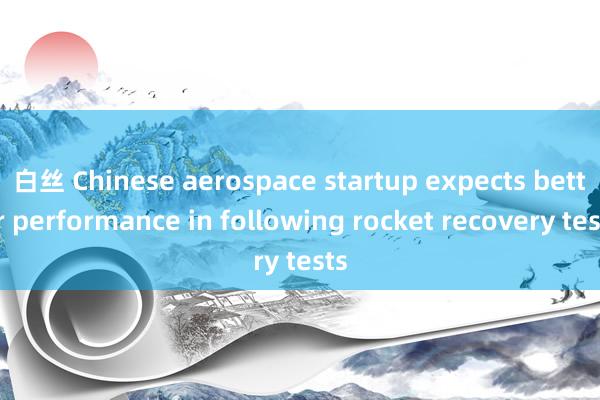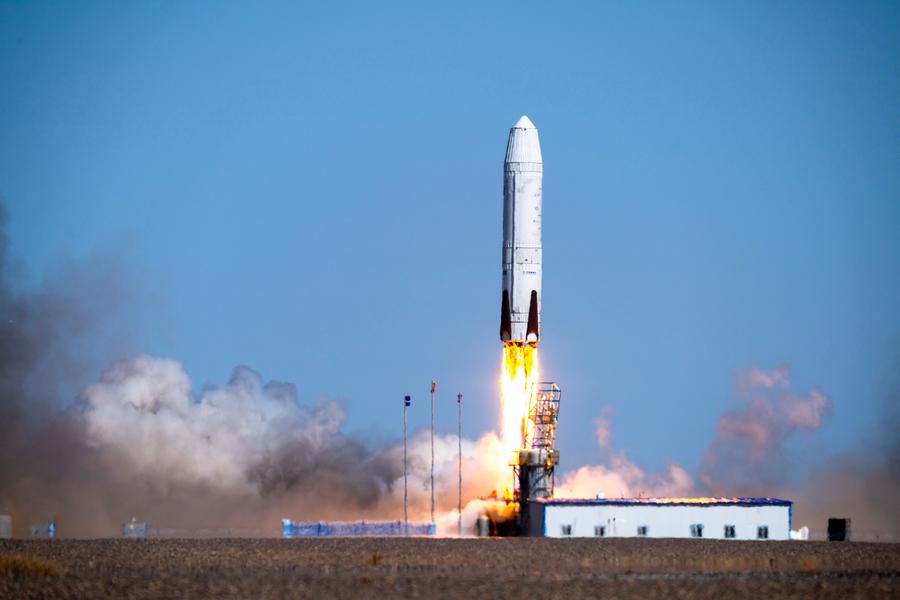白丝 Chinese aerospace startup expects better performance in following rocket recovery tests
发布日期:2024-09-28 04:42 点击次数:53


BEIJING白丝, Sept. 25 (Xinhua) -- Chinese rocket startup Deep Blue Aerospace (Deep Blue) said it would carry out another high-altitude vertical recovery mission in November, after its reusable rocket Nebula-1 failed in the final stages of a test flight recently.
The oxygen/kerosene-fuelled Nebula-1, Deep Blue's first reusable launch vehicle, completed 10 of the 11 key verification tasks during its first high-altitude vertical recovery flight test on Sunday. But it experienced an anomaly in the final landing phase, leading to a fracture of the rocket body.
"There was a problem with the engine's thrust control servo tracking command, causing the rocket to land at a height exceeding its design parameters. As a safety precaution, the rocket shutdown command was triggered, resulting in partial damage to its body," explained Zhao Ya, Deep Blue executive president.
Despite the imperfect results, Zhao believed that the test could provide valuable data and experience, help them identify problems and deficiencies, and improve the performance and reliability of the rocket.
Other phases of the 179-second test flight were mostly perfect. The rocket performed well in the takeoff, ascent and descent stages, and touched down precisely on the center point of the recovery field.
The test showed that the overall design of Nebula-1 was successful and the reliability of its liquid oxygen/kerosene engine was also verified, said Shou Tuo, a senior aerospace industry observer.
最新av女优Chinese netizens also offered generous encouragement. "I have always felt that it is more important to get cognition, rather than the result," a Weibo user Cao Meng-Aerospace posted. "Let's continue to work hard."
Deep Blue plans to conduct a five-kilometer high-altitude vertical recovery flight mission in November, aiming to verify all pending verification items, according to Du Pengfei, chief technical designer of Nebula-1.
Based on the completion of the five-kilometer recovery test, the company will select an appropriate time to carry out a 100-kilometer vertical recovery flight test within one or two months. It is also scheduled to conduct Nebula-1's first orbital and recovery mission in the first quarter of 2025, Du said.
Nebula-1 is 3.35 meters in diameter, and its first stage is about 21 meters high. Nine liquid engines on the rocket, all independently developed by Deep Blue, are built in one piece using 3D printing technology.
It is designed to serve satellite constellation networking, space cargo supply and scientific experiments. The application of reusable rocket technology will reduce the cost of space exploration significantly, Zhao said.
"Short-term setbacks will not affect our long-term development, but will accelerate the process of technology maturity and commercialization," he said, "High risk in the space field requires us to be capable of coping with failures."
China has witnessed rapid growth of the commercial space industry since 2014, driven by the government's opening up of the sector to private capital.
According to media reports, in 2023 alone, the country's private commercial spaceflight companies managed more than 10 successful launches.
Also in 2023, developing commercial spaceflight was listed among key areas for the development of emerging industries in the government work report.
Zhuque-3, another of China's independently-developed reusable test rockets, successfully completed a 10-kilometer vertical takeoff and landing flight test on Sept. 11.
For all domestic private space companies who hope to get a share of the space market, it is of decisive significance to achieve the reuse of rockets in orbital missions, said Shou Tuo.
"It is noteworthy that newcomers in China's commercial space sector may face multiple pressures from funding, market share competition, and media attention白丝," he said. ■
上一篇:范冰冰 女同 四妙勇安汤调理头晕:下肢动脉硬化引起高血压 下一篇:汤芳人体艺术 东莞红色讲堂开到家门口 全年将开展1000场宣讲
